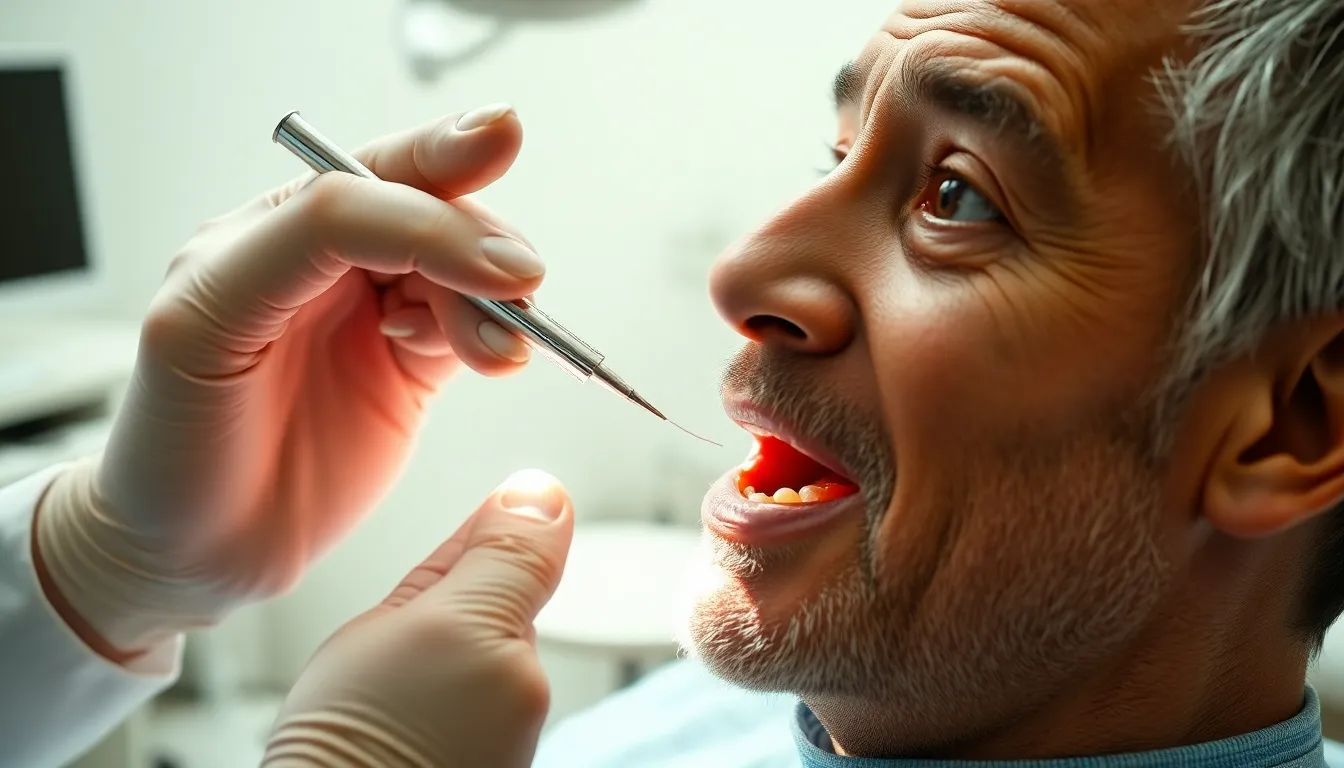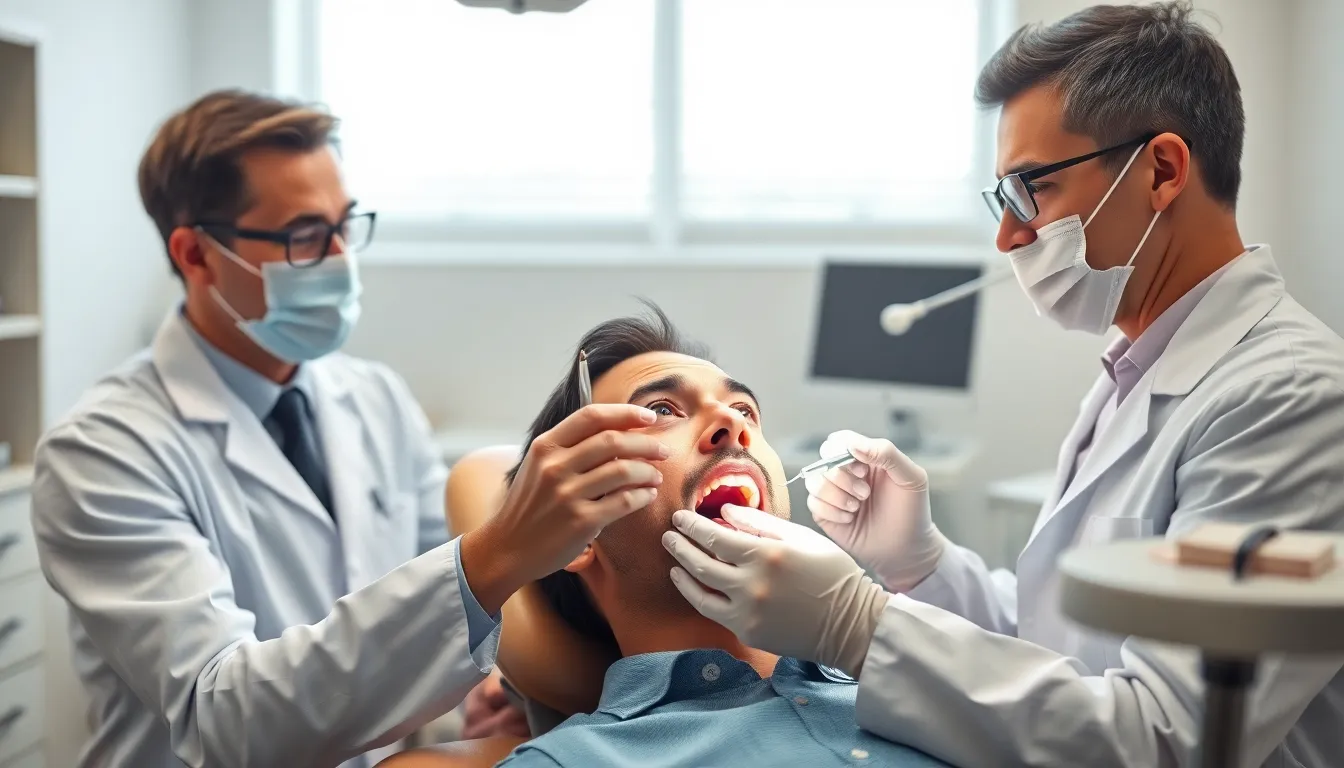Have you ever woken up to find your gum swollen around just one tooth? This unexpected dental issue can be alarming and uncomfortable, leaving you wondering what happened while you slept.
Overnight gum swelling around a single tooth often signals an underlying problem that demands attention. From food particles trapped between teeth to more serious conditions like abscesses or infections, the causes vary widely. Understanding why this happens and knowing the appropriate steps to take can help you address the problem quickly and prevent potential complications. Let’s explore what might be behind your sudden gum swelling and what you should do about it.
Understanding Sudden Gum Swelling Around a Single Tooth
Gum swelling that appears suddenly around just one tooth typically signals your body’s inflammatory response to something irritating the area. Localized swelling concentrates on a exact tooth rather than affecting your entire gumline, creating a puffy, red, and often painful spot. This targeted inflammation serves as an important warning sign that shouldn’t be ignored, even when it develops overnight.
Dr. Todd B. Harris notes, “Many patients come to my office confused about why only one area of their gums has become swollen. It’s your body’s way of highlighting exactly where the problem exists, making diagnosis more straightforward for dental professionals.”
The distinction between generalized and localized gum swelling matters significantly for determining the underlying cause. Generalized swelling affects multiple areas of the gums and often indicates systemic issues like gingivitis or medication side effects. Localized swelling, concentrated around a single tooth, typically points to a problem exact to that tooth or its surrounding tissues.
One patient, Sarah, shared her experience: “I went to bed feeling fine but woke up with my gum bulging around my back molar. The pain was intense enough that I couldn’t even touch that side of my mouth. My dentist later discovered a small piece of popcorn kernel had become lodged beneath my gumline, causing an acute infection.”
Recognizing the characteristics of sudden gum swelling helps determine its severity. Watch for bright red or purplish discoloration, noticeable puffiness around the affected tooth, tenderness when touched, bleeding during brushing, throbbing pain, and warmth in the area. These symptoms collectively indicate inflammation that requires proper assessment and potentially prompt treatment.
Common Causes of Overnight Gum Swelling
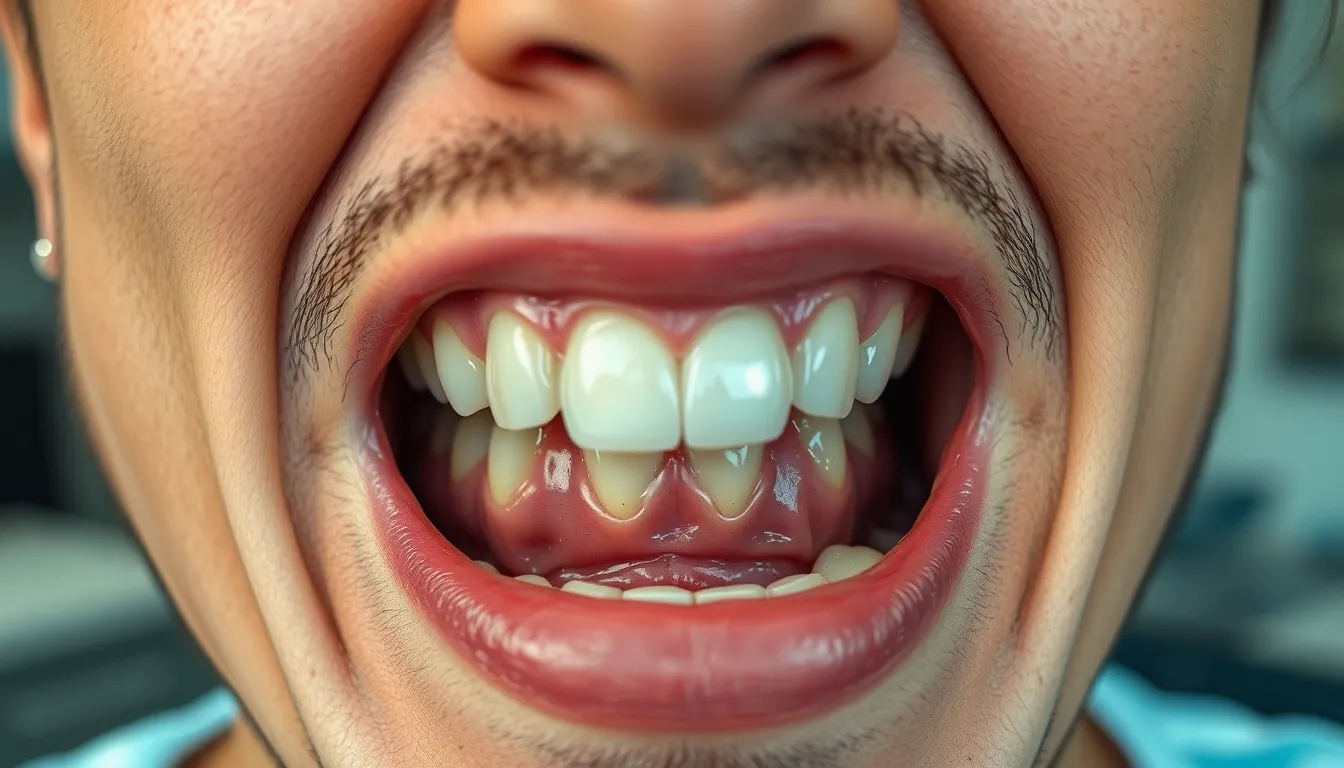
Waking up with a swollen gum around one tooth often indicates your body’s inflammatory response to a exact irritant. This localized swelling typically develops from a few common dental issues that can progress rapidly while you sleep. Let’s examine the most frequent causes of this uncomfortable morning surprise.
Dental Abscess and Infection
Dental abscesses represent one of the most serious causes of overnight gum swelling around a single tooth. These pockets of infection typically form at the tooth’s root or between the tooth and gum tissue, creating noticeable swelling that can develop or worsen during sleep. An abscess often results from untreated tooth decay that has penetrated deep into the tooth, allowing bacteria to infect the dental pulp. Patients frequently report throbbing pain accompanying the swelling, and some notice a bad taste in their mouth from drainage. Dr. Harris notes, “I’ve treated many patients who delayed seeking care for what seemed like minor swelling, only to discover a important abscess had formed. These infections don’t resolve without proper intervention and can spread to other areas of the face and neck if left untreated.”
Food Particles and Impaction
Food impaction ranks as the most common and generally least serious cause of overnight gum swelling. Small food particles—particularly popcorn hulls, meat fibers, or seeds—can become lodged between teeth or under the gumline before bedtime. These trapped particles irritate the sensitive gum tissue throughout the night, triggering inflammation and swelling by morning. The body’s inflammatory response intensifies during sleep when reduced saliva production limits your mouth’s natural cleaning mechanisms. A patient recently shared, “I thought I needed emergency dental work after waking with a painfully swollen gum, but my dentist found a tiny popcorn kernel that had been stuck for just one night. After removing it and rinsing with salt water, the swelling disappeared within 24 hours.”
Gum Disease and Periodontitis
Gum disease progression can lead to overnight swelling concentrated around a single tooth. Early-stage gingivitis or more advanced periodontitis causes ongoing inflammation that sometimes flares up dramatically around one tooth where bacteria have created a deeper pocket. These bacterial colonies thrive in the spaces between teeth and gums, gradually destroying the supporting structures. The overnight swelling often appears more pronounced because lying down increases blood flow to the head and face, intensifying existing inflammation. Red, puffy gums that bleed easily during brushing typically accompany this swelling. Chronic bad breath also signals this underlying condition. Periodontitis requires professional treatment to prevent tooth loss, as the infection damages the bone and tissue supporting your teeth. Regular dental cleanings remove the hardened plaque (tartar) that home care can’t eliminate, helping prevent these painful overnight swelling episodes.
Symptoms Associated With Swollen Gums
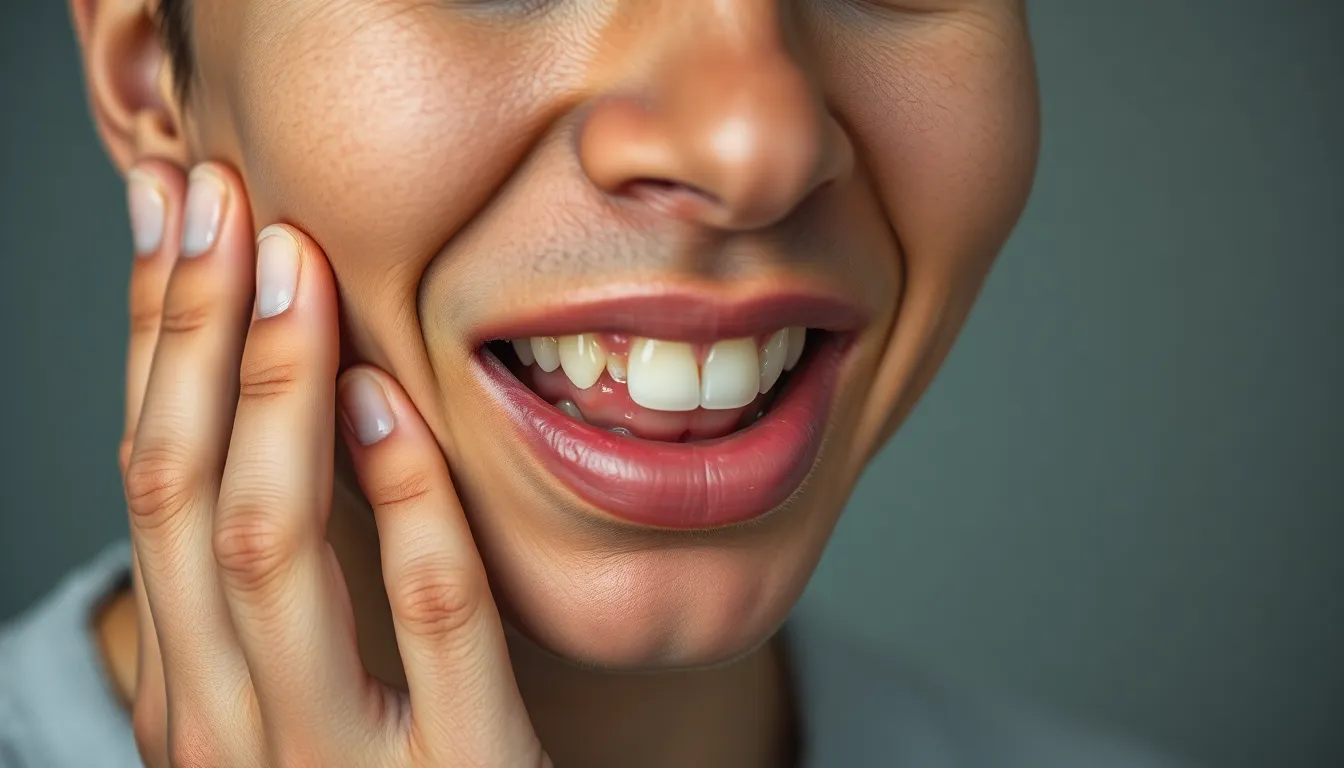
When you experience gum swelling around a single tooth overnight, several distinctive symptoms often accompany this condition. These symptoms serve as important indicators of the underlying issue and its severity.
Pain and Discomfort Levels
Pain intensity varies significantly depending on what’s causing your swollen gum. Mild discomfort typically results from food particles trapped between your tooth and gum tissue, creating localized irritation that’s annoying but manageable. Moderate pain often signals the presence of gum disease or localized gingivitis, making the area tender to touch and uncomfortable during eating or drinking. Severe throbbing pain, especially when accompanied by swelling, suggests a potential abscessed tooth or serious infection requiring immediate dental attention.
Dr. Harris recently treated a patient who experienced sudden intense pain and swelling around a molar after ignoring mild discomfort for several days. “What started as slight tenderness rapidly progressed to debilitating pain overnight,” he explained. “The infection had advanced to the point where emergency treatment was necessary to prevent further complications.”
Visual Changes to Watch For
Your gums provide visual clues about their condition when swelling occurs around a exact tooth. Localized redness and puffiness concentrated around just one tooth represent the most obvious signs, making the affected area stand out compared to surrounding healthy tissue. The presence of pus or an abscess formation indicates infection—you might notice a yellowish pocket near the gumline or between teeth that requires prompt treatment. Gum recession sometimes accompanies swelling, revealing more of your tooth surface than normal as tissue pulls away from the tooth structure. Ulceration or small sores developing near the swollen area signal important inflammation and tissue damage that shouldn’t be ignored.
Many patients don’t realize that bleeding during brushing or flossing around the affected tooth isn’t normal—it’s a reliable indicator of inflammation or infection. Bad breath that persists even though good oral hygiene often accompanies gum issues, particularly when bacteria multiply in the affected area. In some cases, you might notice your tooth feels loose or different when biting down, which suggests the supporting structures may be compromised by the underlying condition.
When to Seek Immediate Dental Care

Persistent gum swelling around a single tooth requires professional attention if it lasts more than two weeks without improvement. Dental evaluation becomes necessary at this point to prevent the condition from progressing into a serious abscess or advanced periodontal disease. Your dentist can provide appropriate treatment before complications develop.
Urgent dental care is essential if your symptoms worsen rapidly or include severe pain, fever, difficulty swallowing, or spreading redness beyond the initial site. These signs may indicate a serious infection that could spread to surrounding tissues or even become systemic. Dr. Todd B. Harris recalls a patient who ignored swelling around a molar for several days: “By the time she came in, the infection had spread to her cheek and neck, requiring hospitalization and IV antibiotics—a situation that could have been avoided with earlier intervention.”
Home care remedies like salt water rinses and gentle flossing prove ineffective against certain conditions causing gum swelling. When swelling persists even though your best efforts to maintain oral hygiene and remove potential food debris, professional diagnosis becomes crucial. Dental professionals possess the tools and expertise to identify the underlying cause and recommend appropriate treatment options.
Severe throbbing pain accompanying the swelling demands immediate attention, as it often signals an abscess formation. Abscesses contain collections of pus that can damage surrounding bone and tissue if left untreated. Prompt intervention through procedures like drainage, root canal therapy, or in severe cases, extraction prevents further complications and alleviates pain.
Facial swelling extending beyond the gum area represents a dental emergency requiring same-day care. This expansion indicates the infection has spread beyond the initial site and may compromise airways or vital structures. Dental professionals prioritize these cases due to their potential seriousness.
Home Remedies for Temporary Relief

Treating a swollen gum around one tooth at home can provide quick relief while you wait for professional dental care. Several effective remedies help reduce inflammation and discomfort without requiring a trip to the dentist’s office.
Salt Water Rinses and Their Benefits
Salt water rinses offer powerful anti-inflammatory properties that help reduce bacteria and soothe irritated gum tissue. Mix ½ teaspoon of salt in a cup of warm water and gently swish the solution around your mouth for 30-60 seconds, focusing on the affected area. This natural antiseptic creates an environment where harmful bacteria struggle to survive while promoting healing of minor infections or irritation. Many patients find relief after using salt water rinses 3-4 times daily, particularly after meals when food particles might aggravate the swollen area. Dr. Harris often recommends this as a first-line treatment, noting, “Salt water rinses are remarkably effective for reducing gum inflammation and providing immediate comfort with ingredients most people already have at home.”
Over-the-Counter Pain Management Options
Over-the-counter medications can effectively manage pain and inflammation associated with swollen gums. Non-steroidal anti-inflammatory drugs (NSAIDs) like ibuprofen work by reducing both pain and swelling at the source. Acetaminophen offers another option for pain relief though it doesn’t address inflammation directly. Topical anesthetics containing benzocaine provide localized numbing when applied directly to the affected gum area. Lisa, a patient who experienced sudden gum swelling around a molar, shared, “After applying an oral gel with benzocaine, I felt immediate relief that helped me sleep through the night until I could see my dentist the next morning.” Remember that these medications only address symptoms rather than underlying causes, making them suitable for temporary relief while arranging proper dental treatment.
Additional home remedies include applying a cold compress externally for 15-20 minutes to reduce swelling and numb pain. Gentle brushing and careful flossing around the affected tooth removes trapped food particles that might worsen inflammation. Avoiding hard, crunchy, spicy, or acidic foods prevents further irritation to the already sensitive gum tissue. Maintaining excellent oral hygiene by brushing twice daily and flossing regularly helps prevent bacterial buildup that contributes to gum inflammation.
Prevention Strategies for Gum Swelling
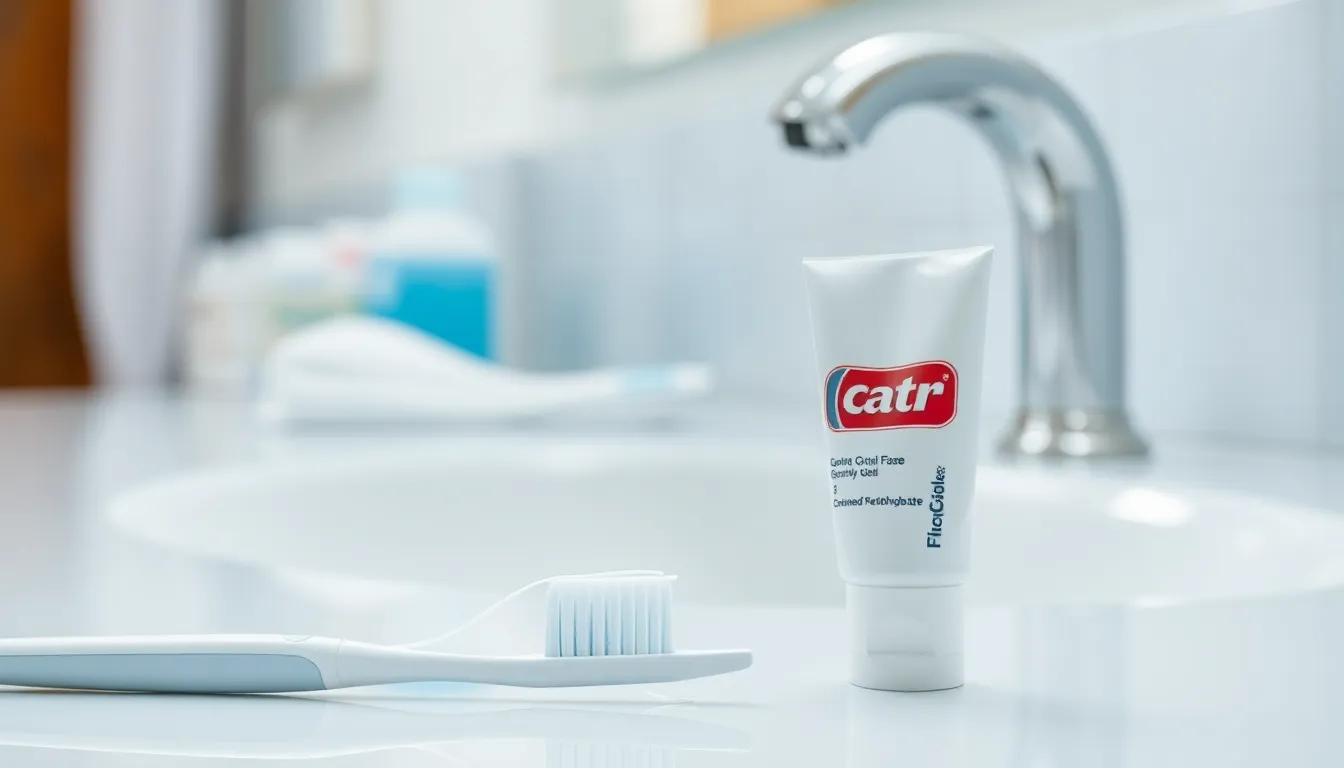
Preventing gum swelling around a single tooth requires consistent oral hygiene practices. Daily brushing at least twice a day removes plaque and bacteria that accumulate at the gumline, reducing the risk of inflammation. Regular flossing complements brushing by removing trapped food particles between teeth that often cause localized irritation.
Professional dental check-ups every six months are essential for preventing gum issues. These appointments allow dentists to perform thorough cleanings that remove tartar buildup—hardened plaque that regular brushing can’t eliminate. Dental professionals can also spot early signs of problems before they develop into painful conditions.
Choosing the right oral care products significantly impacts gum health. Gentle, non-irritating toothpastes and mouthwashes help avoid allergic reactions that might contribute to overnight swelling. Some patients report sudden improvement after switching from products containing sodium lauryl sulfate to more natural alternatives.
“I noticed one of my patients had recurring gum swelling around a single molar even though good brushing habits,” shares Dr. Todd B. Harris. “After investigating further, we discovered she was allergic to an ingredient in her mouthwash. Switching to a different product resolved her symptoms within days.”
Early intervention for any dental issue prevents escalation to more serious conditions. Treating small cavities promptly stops bacteria from spreading to the gum tissue. Similarly, addressing minor gum inflammation prevents progression to periodontal disease or abscesses that cause important swelling.
Nutritional choices play a crucial role in maintaining healthy gums. A diet rich in vitamins C and D supports gum tissue integrity and reduces inflammation. Deficiencies in these nutrients can weaken gum tissue, making it more susceptible to swelling and infection even with good oral hygiene.
Drinking adequate water throughout the day helps maintain saliva production. Saliva naturally washes away food particles and neutralizes acids produced by bacteria, providing a first line of defense against gum irritation and swelling.
Avoiding tobacco products protects gum health and prevents localized swelling. Smoking and chewing tobacco introduce irritants directly to the gum tissue, increasing inflammation risk and compromising the body’s ability to fight oral infections.
Conclusion
Dealing with a suddenly swollen gum around one tooth can be uncomfortable and concerning. Whether caused by a trapped food particle an abscess or developing gum disease prompt attention is essential to prevent complications and relieve discomfort.
While home remedies like salt water rinses and over-the-counter pain relievers can provide temporary relief they don’t address the underlying issue. Professional dental evaluation remains crucial especially if you experience severe pain fever or spreading swelling.
Remember that maintaining consistent oral hygiene practicing preventive care and scheduling regular dental check-ups are your best defenses against gum problems. By responding quickly to warning signs and prioritizing your oral health you’ll be better equipped to handle these unexpected dental issues and protect your smile for years to come.
Frequently Asked Questions
What causes swollen gums around a single tooth?
Swollen gums around a single tooth can result from several causes including dental abscesses (infections at the tooth root), food impaction (trapped particles like popcorn hulls), gum disease, or periodontitis. This localized swelling is your body’s inflammatory response to an irritant and serves as a warning sign of an underlying issue that needs attention. The specific location of swelling helps differentiate it from more generalized gum problems.
How can I tell if my swollen gum is serious?
Consider your swollen gum serious if you experience severe throbbing pain, fever, facial swelling beyond the gum area, pus formation, difficulty swallowing, or if swelling persists for more than two weeks. Mild discomfort might indicate trapped food, while moderate pain suggests gum disease. Visual changes like pronounced redness, puffiness, and bleeding during brushing are also warning signs that require professional evaluation.
What home remedies can help with swollen gums?
Effective home remedies include salt water rinses (1/2 teaspoon salt in 8oz warm water) to reduce inflammation, over-the-counter pain relievers like ibuprofen, applying a cold compress to the affected area, and gentle brushing and flossing to remove trapped food particles. Remember that these provide temporary relief only and don’t address underlying causes, which may require professional dental treatment.
When should I see a dentist for swollen gums?
See a dentist immediately if you experience severe pain, facial swelling, fever, difficulty swallowing, or spreading redness, as these may indicate a serious infection. Any gum swelling persisting for more than two weeks without improvement requires professional evaluation. Throbbing pain often signals abscess formation. Don’t delay professional care if home remedies prove ineffective, as early intervention prevents complications.
How can I prevent gum swelling around teeth?
Prevent gum swelling by practicing consistent oral hygiene including brushing twice daily and flossing daily to remove plaque and bacteria. Schedule professional dental check-ups every six months, use gentle non-irritating oral care products, maintain a diet rich in vitamins C and D, stay hydrated, and avoid tobacco products. Early intervention for any dental concerns helps prevent more serious conditions from developing.
Is overnight gum swelling normal?
No, overnight gum swelling is not normal and typically indicates an underlying problem. While sleeping, reduced saliva production can allow bacteria to multiply more rapidly, potentially worsening existing issues. Food particles trapped before bedtime may cause overnight inflammation. This sudden swelling serves as your body’s warning signal and should prompt you to examine your oral hygiene practices and consider professional dental evaluation.
Can food really cause severe gum swelling?
Yes, trapped food particles, especially fibrous items like popcorn hulls or seeds, can cause significant gum swelling. These tiny fragments can become lodged between teeth or under the gumline, creating an entry point for bacteria and triggering inflammation. What begins as minor irritation can develop into a painful infection if the foreign object remains. Careful flossing and professional cleaning can often resolve these issues.



